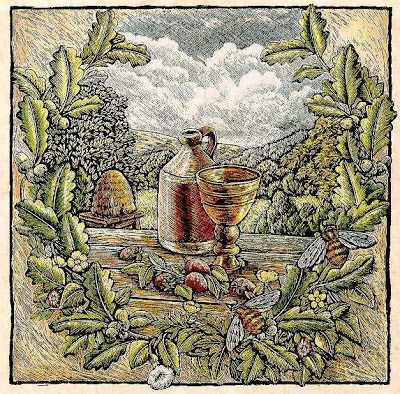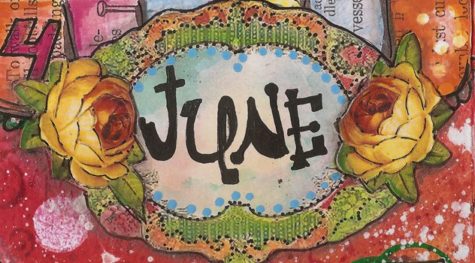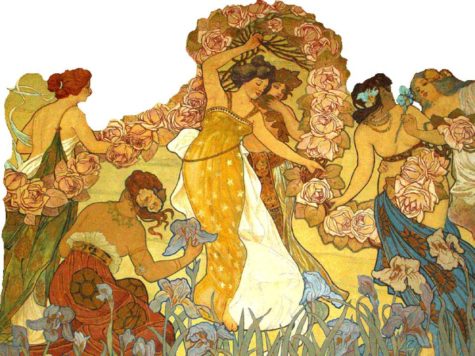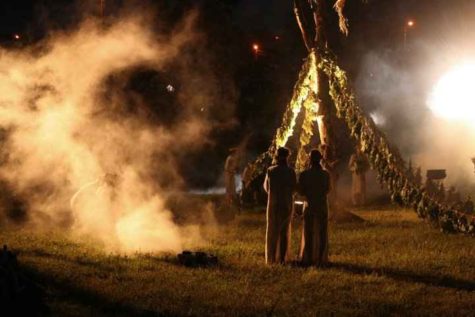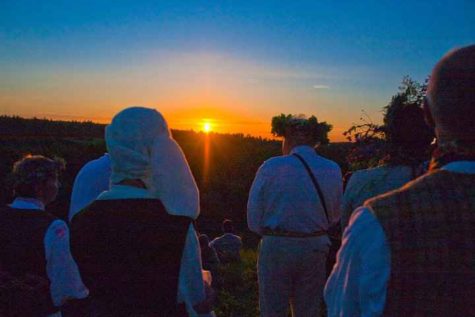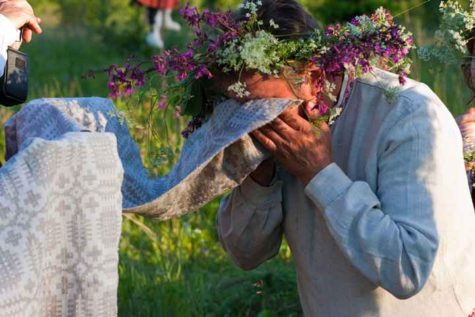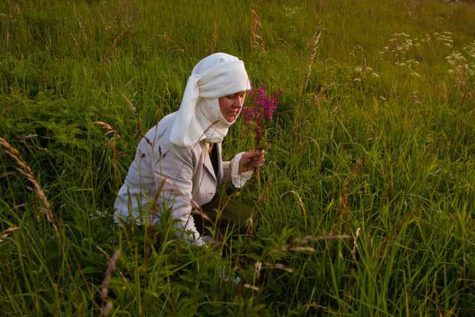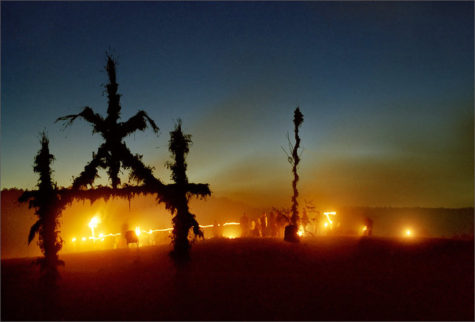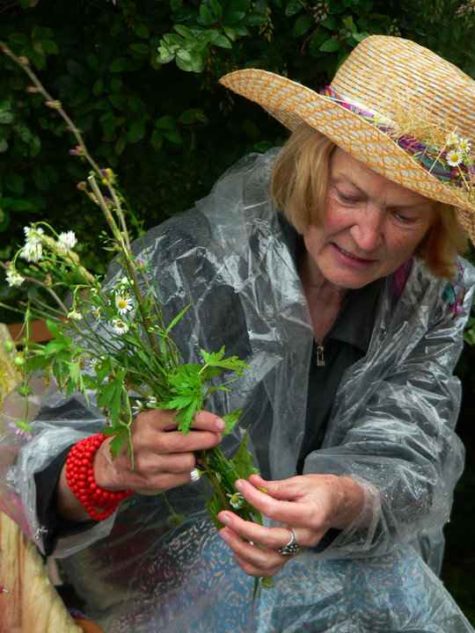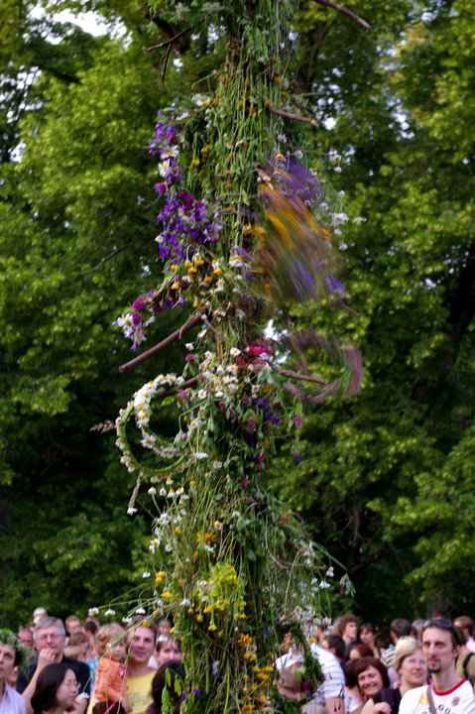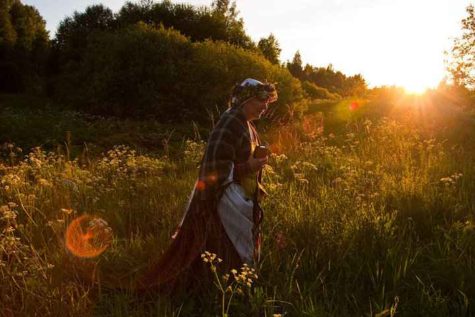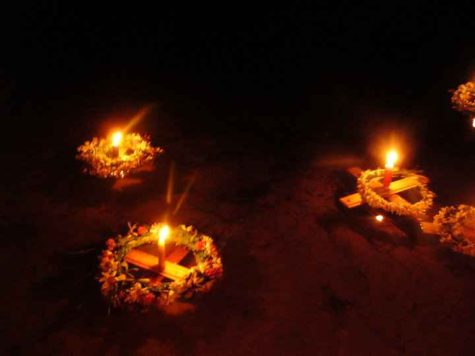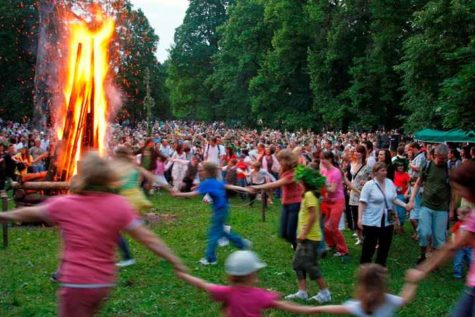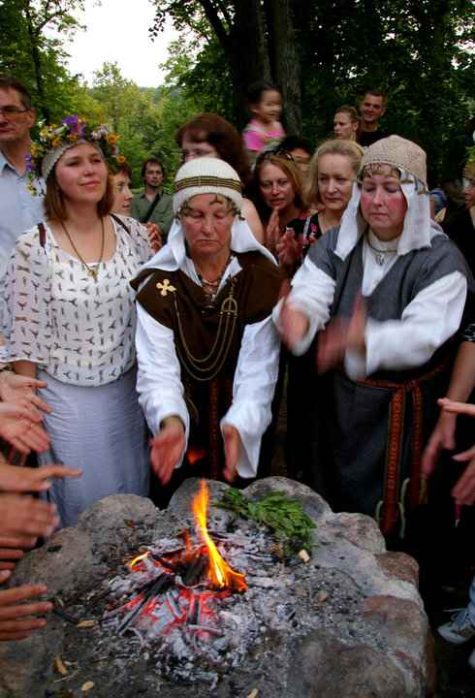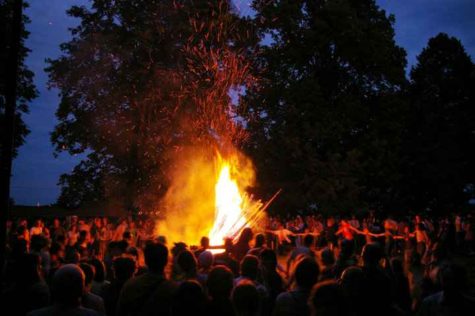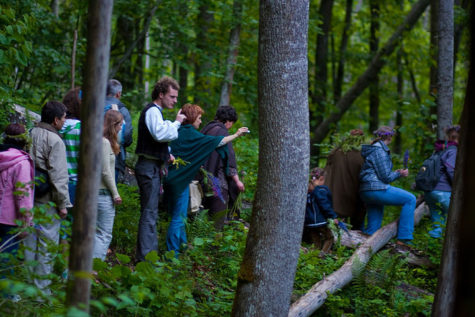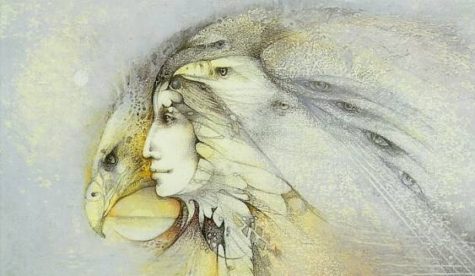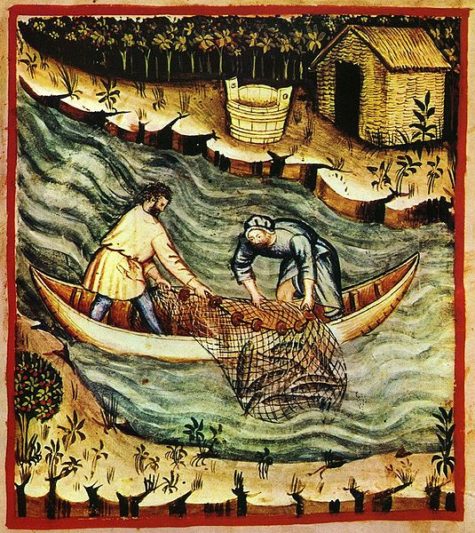June
The original Roman name for this month was Junoius, after the Great Mother Goddess Juno; her counterpart among the Greeks was Hera. The Summer Solstice has been and still is important to many religions and cultures around the world. Not only was it sacred to goddesses of fertility, marriage, and love, but it was considered to be a time when faeries, elves, and many other supernatural beings were abroad in great numbers.
June’s energies are focused on socialization and activity. It is a capricious month, filled with young love, romance, and the companionship of good friends. Any magic aimed at enhancing one’s relationships, communication skills, and the personal energy level necessary for maintaining both will be augmented by working during this month.
The magickal correspondences for June can be found at Magickal Ingredients, here: Correspondences for June.
The June Moon has enormous energies for calling upon and working with elementals of all types. Tides of psychic energy flow freely, enabling even the most staid of people to experience unusual happenings.
On or about 21 June is the Summer Solstice, the festival of Midsummer, the Anglo-Saxon Lith and the Alaban Hefin of the Druids. The Irish name for June is Meitheamh, while the Anglo-Saxon name was Aerra Litha, “before Litha.” The Franks called June Brachmanoth, “break month,” while in modern Asatru it is called Fallow.
The Summer Solstice festival in Slavonic-Russian cultures was called Kupalo and Jarilo. Other names were Kostroma, Sobotka, Kresnice, and Vajano. Kupalo/Kupala was the name of an ancient Slavic deity, originally a goddess, later a god. Special features of this festival were the lighting of fires, the sprinkling of water, and foretelling the future.
The Full Moon festival of Edfu in Egypt honored the goddess Hathor. The cow horns on her head represented the Crescent Moon. Every year at the new Moon the stature of Hathor was taken from her temple at Dendera and transported by boat to the temple of the god Horus at Edfu, arriving on the Full Moon.l This festival celebrated the frank sexual union of the two deities. It was a time of great festivities and very likely human marriages, since it was considered a period of good luck.
The Egyptian festival called the Burning of the Lamps took place in Sais in the temple of Isis. There, in an underground chapel beneath the main temple, was a wooden coffin for the god Osiris. Priestesses, priests, and initiates gathered in this hidden place carrying lamps. Then they marched in a procession around the coffin. The Egyptians said it was the light of the Moon that Isis called upon to bring Osiris back to life. Myth says that when Osiris ascended to the heavens, he went to the Moon.
In Rome, the month of June was sacred to the goddess Juno and therefore a lucky month in which to be married. It was also a time for the Vestal Virgins to cleanse the penus (a sacred vessel) in the Temple of Vesta.
The Roman celebration of the Ludi Piscatari, or festival of the fishermen, was really a blessing of boats. They believed that every boat had a personal spiritual entity. If the powers that went into the boat during its building were not in harmony with the entity, the boat would never ride easily on the water; it would always fight with the wind and the waves. The ritual of blessing the boat harmonized the energies imbued in the vessel, making it lively, willing, and enduring.
The Celtic Day of Cerridwen and her cauldron may have originally been associated with the Summer Solstice. Cerridwen of Wales was a Dark Moon goddess; her symbols were the cauldron, grain, and the Moon. The white, corpse-eating sow, representing the Moon, was one of her animal emblems.
In Tibet, this was a time of masked sacred dances and mystery plays. They had celebrations of the Medical Buddhas and of the Birth of Padmasambhava, who was considered to be a great spiritual teacher.
To the Incas in the Southern Hemisphere, this was the season of the Winter Solstice, since seasons are reversed. They had the Feast of the Sun, or the Inti Raymi, to celebrate the maize harvest. Chanting would last from sunrise to sunset. Inti was the Sun god of the ruling dynasty, represented by a great golden disk with a human face.
As ruler of the high point of the year, the time of the maximum light and minimum darkness, June is the light counterpart of Janus, the ruler of the New Year period. In the Goddess Calendar, the first 12 days of June belong to Hera. On 13 June begins the month of Rosea.
The month of June is the “door of the year,” the gateway to the inner realms. The rune Dag that rules the middle of the month, is the rune of opening, representing the door that excludes bad things and admits only that which is beneficial. The runic year begins in June, with Feoh.
The Celtic Tree Calendar month of Huath (hawthorn) ends on 9 June to be followed on the 10th by the Oak month, Duir. This is a month of strengthening and consolidation of gains. It can also be said to represent the “door” of the year, opening to let the sun shine in. Duir had the sacred color of black.
From: Moon Magick and other sources
“What is one to say about June, the time of perfect young summer, the fulfillment of the promise of the earlier months, and with as yet no sign to remind one that its fresh young beauty will ever fade.” ~Gertrude Jekyl
June takes its name from Juno, the Roman goddess of the hearth and home, and patron wives.. Not surprisingly, June became the traditional month for marriage in Rome, and it continues to enjoy tremendous popularity for weddings today.
Married in the month of roses – June.
Life will be one long honeymoon.
In medieval times June was chosen for the month to marry because the annual baths of the populace took place in May. From May to the following May cleanliness was not a part of their daily ritual as it is today. It was an annual event. So, being that they were relatively clean in June made it a good time to have a special event such as a wedding.
June is also the favored month for flower festivals, likely due to the abundance of earth’s blossoms around this time of year. Other associations include the following:
- Flower: Rose and Honeysuckle
- Meaning: Health and longevity
- Gemstone: Pearl, Moonstone, and Alexandrite
Another precious stone associated with June is the agate, whose traditional rhyme is as follows:
Who comes with summer to this earth,
And owes to June her hour of birth
With ring of Agate on her hand
Can health, wealth and long life command.
June is named after the Roman Great Mother Goddess, Juno; the Greek Hera. The month’s name was originally Junonius. Juno has may attributes, the chief of which is as the Queen of Heaven. This is attribute is ascribed to Frigg in the Northern Tradition and Mary in the Christian.
June has been considered a lucky month since Roman times. As Juno Moneta, guardian of money and wealth, the goddess had a temple dedicated to her on the Capitoline hill in Rome. This contained the mint where coinage was produced. This theme of wealth can also be seen in the runic year cycle: the half-month of Feoh, the time of wealth and abundance, begins on 29 June.
 A man who married in June was guaranteed prosperity, and his wife happiness. This was because the Goddess Juno was associated with money and wealth, and also because she was happily married to Jupiter.
A man who married in June was guaranteed prosperity, and his wife happiness. This was because the Goddess Juno was associated with money and wealth, and also because she was happily married to Jupiter.
Whenever anyone got married in her month, Juno ensured the union was blessed with great happiness. June also has the longest day of the year, and this symbolizes a long and happy marriage.
June’s full moon is sometimes called the Hot or Strawberry Moon.
Bonfires of Saint John is a popular festival celebrated around June 24, (Saint John’s day) in several towns in Spain. For this festival, people gather together and create large bonfires from any kind of wood, such as old furniture, and share hot chocolate while teens and children jump over the fires.
A pie of tuna (coca anb tonyina) and early figs (bacores) is traditionally eaten while setting up the events.
The festival is celebrated throughout many cities and towns; however, the largest and most elaborate version is in Alicante. On the night of St John, gigantic (20 to 30 foot high) explosive caricatures (ninots) are paraded through the streets and exploded in a spectacular finale with fireworks and pyrotechnics, making this festival into the most important (and loudest!) cultural event in Alicantinian society.
Collected from various sources
In ancient Rome, this day (June 24) was known as the Festival of Fata, the Goddess of Fate and Chance. She was more commonly called Fortuna, and this day was also known as the Festival of Fortuna. The Temple of Fortuna stood on the banks of the Tiber and on this day many Romans would make a pilgrimage on foot or by boats decorated with garlands of flowers. Fortuna was especially popular with poorer Romans and the servant class, who sought the blessings that more successful Romans already had.
About Fortuna:
Initially Fortuna, the Roman goddess of abundance, was honoured as a fertility goddess, but came to symbolise abundance as the fickleness of life and luck followed the cyclic ups and downs of life. She was invoked for good luck and prosperity, or lamented to during times of hardship.
She is usually depicted holding a rudder in one hand, steering our destiny as our karmic path progresses, and/or a cornucopia (or horn of plenty) signifying the wealth that she could bring. Often she has a wheel beside her, reminding us that she is the benefactor of life, death, and the wheel of fortune.
From ancient times people marked the time of the return of the sun, the shortest and longest night. In olden times it was called the Feast of the Dews- Rasos. When Christianity was established in Lithuania, the name was changed to Feast of St. John, according to agrarian folk calendar, the start of haying.
The rituals of the longest day were closely related to agrarian ideas and notions. The main aim was to protect the harvest from natural calamities, evil souls, witches and mid summer visitors like drought, hail, downpours of rain and thunder.
In the 15th century, visitors to Lithuania wrote that in Vilnius, the celebrations took place in the eastern section of the city, the place of the present day “Rasos” cemetery. Fires were lit on hills and in dales. People danced, sang, ate and drank. On the Feast of St John a special role was granted to the sun. The sun is constantly mentioned in songs sung on the longest day of the year.
On this ritual day, farmers paid special attention to water’s special powers in reviving soil and making it productive. Witching on this day were carried out near and with water, people washed themselves and their animals. Special attention was paid to the dew because it revives plants at night. At sunrise farmers made their way around the fields, pulling a branch which brushed the dew to fall into the soil and cause a good harvest.
Maidens tried to get up before sunrise, collect the dew and wash their faces with it to make them bright and beautiful. They would also get up at night, go outside to wet their faces in the dew and returned to bed without wiping their faces dry. If that night they dreamt of a young man bringing them a towel, they hoped that he would be the one they would marry.
Flourishing plants were worshiped because it was believed that plants collected on the eve of the Feast of St. John posses magic powers to heal, bring luck and foretell the future. This is an ancient ritual practiced mainly by women. Roses, common daisies, especially the herb St. John’s worth and numerous grasses were some of the main plants collected at this time.
A festival pole, decorated with flowers and greenery was called “Kupolė”. Folklore shows that “Kupolė” was the Goddess of plants, living in aromatic plants, blossoms or in buds in summer and in snowdrifts in winter.
In Lithuania Minor, even in winter before the Feast of St. John, women made haste to collect medicinal herbs, with the belief that after June 24th all herbs lose their healing powers.
Girls returned to the village after picking flowers and singing, wreathed the festival post, “Kupolė”, and added colorful fluttering ribbons to it. This festival post was set at the far end of the village, near the grain fields. It had to be defended during two days and nights from young men who tried to steal it.
After saving the post, the girls removed the decorative herbs and grasses and divided them amongst themselves because these herbs had special protective powers against evil spirits and illnesses.
In some regions bunches containing nine plants were gathered by women on the eve of the Feast of St. John. Some of the plants were fed to animals before midnight, so they would be protected from evil eyes. Bunches of St. John’s worth were placed behind pictures of saints. If this bunch did not wilt fast, it was believed that it will be a lucky year.
It was believed that wreaths concentrate perpetual life’s forces and are symbols of immortality and life. There were many rites and witching’s associated with wreaths during this longest summer’s night.
Walk around three fields and gather bunches of nine flowers, twine a wreath and place it under your pillow. You will marry the man, who in your dream comes to take away the wreath. At midnight, twelve wreaths were dropped into a river and observed if they were pairing off. If no pairing off occurred, there was to be no marriage that year.
Near the river Nemunas, wreaths were dropped in the water, only when the river was calm and observed to which direction they drifted. Matchmakers would come from that direction. Releasing the wreath with the current, it will be caught by a young man, the maiden will be his. Should the wreath float away without being caught, the maiden will keep that wreath all year in her dowry chest, as a symbol of luck and health.
In the seacoast region, all during the night, young men and women twined wreaths from ferns, placed candles and set them in streams. Should both their wreaths swim together, they believed that they would marry that year.
In some regions wreaths twined during the night of the Feast of St. John were placed at crossroads with the belief that ones future will be seen in a dream.
The rites of this day continued till sunrise around bonfires. The site selected for ritual bonfires was always in the most beautiful area, on hills, on river shores and near lakes. In some regions bonfires were lit on future grain fields and under linden trees.
Those who are not fond of socializing on the eve, hurry and gather along lake shores, light bonfires, place burning poles, covered with tar into trees, so that there would be light all night long until sunrise. Special decorated wheels were lit and were rolled down hillsides, this symbolized the sun’s moving away from the earth and at the same time a request for her return.
In ancient times, the ritual fires were lit by senior priests, “vaidilos”. That fire was started with sparks coming from rubbing dried roots of medicinal herbs or from flying sparks when striking flint stones. Such fires would protect from epidemics, illnesses, poor harvests, hail and lightning.
Eggs were thrown into the fires and animals sacrificed. Later straw dolls were sacrificed in place of animals.
The ritual fires were built up to throw their light over a large area of fields, to assure a big autumn harvest. On the eve of this feast day, home fires were put out and new fires were lit using glowing coals from the ritual fires of that day.
It was believed that these ritual fires had special powers, which would protect from misfortunes, bring health and harmony to the family. It was important for newlyweds to light the fire in their hearth with the coals of the miraculous ritual fire. Such a family would be blessed, live well and in total harmony.
Jumping over fires or around it had magic meaning. Ritual bonfires cleansed both physically and psychologically. Sick adults and children were brought to the ritual fires and were pulled through the fire, with the belief that they would be healed. Jumping over the fire was carried out with the belief of making better health, increasing body strength for hard summer labors and assuring better growth of grain and flax.
Ritual fires’ ashes, smoldering coals had special powers to increase the harvest and protect it from natural calamities. The coals were dug under in fields; ashes were sprinkled on crops to assure good crop yields. To keep weeds from growing in grain fields, ritual fires’ wood splinter remains were tied to the plough share when ploughing the fields.
The feast of St. John is connected with summer weddings and their rituals which were bound to affect family living and population increases. Should a pair become friends this night, there will definitely be a wedding.
The night of June 24th is the shortest night of the year, filled with bird sounds and luxuriant vegetation. Darkness substitutes light unnoticeably, night is full of miracles due to fire reflections and shadows. It was believed that activity during this night of supernatural creatures or female witches was ill disposed towards men, animals and plants. To keep animals from their malevolent actions, animals were put in barns before sunset and were fed bread with salt for protection. Mountain ash branches and wheat sprays were hung on door posts for protection against evil spirits
In some regions clogs were placed in front of a mirror. Witches would step into the clogs and run away upset by their frightful image in the mirror.
“Šatrija” was the most famous witches’ hill, where during the night of the Feast of St. John, witches party and rage all night and invent all kinds of enchanting. This is why one could not do without “witches’ burnings”. Young people tied a barrel filled with tar and sawdust to a high pole, sprinkled it with salt so that the witches would crackle. The barrel was set on fire while the young people sang and danced merrily. Next morning the cow herd was driven through the remaining ashes, with the belief that witching’s will no longer be harmful.
During the night of the Feast of St. John, the miraculous fern bursts into bloom. It is difficult to catch sight of this bloom; however this difficulty can be overcome by going to the forest the day before, cutting down a mountain ash, pruning the branches and cutting off the top. Then pulling the tree backwards, walk about one hundred steps without looking back, toward the side to which the cut tree fell.
Look back after the hundred steps and then you will see the devil sitting stuck in the ash tree. The devil will ask for your help to get off the tree and for your help will tell you where to find the blooming fern. When you locate the blooming fern, ghosts will attack with butting horns whirlwinds will howl and cats will cry. Then take a cane made of mountain ash, draw a circle around you with it, spread a linen cloth and stop being afraid. The fern blossom will fall on the cloth. Some say that the fern bloom is like birch dust, others describe it as round and white like carp’s scale.
Prepared by: http://ausis.gf.vu.lt/eka/
Photos by: Gintaras Jaronis, Vytautas Darasevičius, Leonardas Šidlauskas and A. Kiričenko.
- Themes: Freedom; Perspective; Overcoming; Health; Power; Destiny; Air Element; Movement
- Symbols: Feathers (not Eagle – gathering these is illegal)
- Presiding Goddess: Mother of All Eagles
About the Mother of All Eagles:
On the warm summer winds, Eagle Mother glides into our reality, carries us above our circumstances, and stretches our vision. Among Native Americans, the Eagle Mother represents healing, her feathers often being used by shamans for this purpose. Beyond this, she symbolizes comprehension, finally coming to a place of joyfully accepting our personal power over destiny.
To Do Today:
On this day (June 20), in 1982, President Reagan declared Bald Eagle Day to honor the American emblem of freedom. In Native American tradition, this emblem and the Eagle Mother reconnect us with sacred powers, teaching us how to balance our temporal and spiritual life on the same platter.
Find a new, large feather for an Eagle Mother talisman. Wrap the pointed end with cloth crisscrossed by leather thongs or a natural fabric ribbon. Each time you cross the leather strings, say:
______ bound within;
when released by wind, let the magick begin.
Fill in the blank with the Eagle Mother attributes you desire, then have the feather present or use it in rituals or spells to disperse incense, thereby releasing its magic on the winds.
From 365 Goddess
When former president Tabaré Vázquez created the ‘Día del nunca más’ (‘Never Again Day’) in 2006, he envisaged it drawing a line under the:
“horror of the recent past to salve the open wounds left by the dictatorship”
Ten years on and it is a safe bet that the ‘Never Again Day’ will in fact never be celebrated again.
I love the idea of a “Never Again Day.” It didn’t work for President Vázquez of Argentina, but maybe it could work on a personal level for those of us who need to take some time to make note of and work to change our most familiar patterns of self destruction.
On this day, (June 17) the Romans celebrated the festival of Ludi Piscatari, festival of fishermen. Ludi Piscatari became sacred in England as a Christian Saint, renamed St. Botolph. Botolph guarded the gates of ancient English walled cities. His sigil is an Egyptian diamond, a marker still used today in navigation.
The Egyptians called it, Night of a Teardrop. On this night, (June 16) when the moon rose high in it’s sky, Isis shed one blessed and mournful tear for her beloved, Osiris. That precious tear was then collected into the palm of the Goddess of the River Nile, Satis, in which she placed it within’, causing the Nile to bring forth it’s annual flood. Even in Isis’ pain, something divine came forth.

The Nile River has always been the backbone of Egypt. The mighty river flows for some 4,000 miles from the mountains of Equatorial Africa (Blue Nile) and Lake Victoria (White Nile) before it empties into the Mediterranean Sea. Were it not for the Nile River, Egyptian civilization could not have developed, as it is the only significant source of water in this desert region. It would flood each year, bringing in silt-laden waters; when the waters receded the silt would stay behind, fertilizing the land,the silt would be helpful for growing crops.
If a flood was too large it would wash over mud dykes protecting a village. A small flood or no flood at all would mean famine. A flood must be of just the right intensity for a good season.
The Ancient Egyptians used an object called a nilometer to record how high the Nile was during the year. The nilometer was a staircase that proceeded down into the Nile with marks on it so the Egyptians knew how far the river rose. Nilometers were placed at various points along the Nile in order to monitor the changes in the water level. It was recorded that at the start of the flooding the clear waters would turn a turbid red.
As the agriculture of Egypt revolved around the Nile, so did the social life of the ancient Egyptians. During inundation when there was less to do, people had more time for recreational activities, they played games, held sporting tournaments and regularly feasted.
When the River Nile receded the appearance of the land had radically changed and there was a great rush to restore boundaries. There were many disputes as markers had moved, banks had collapsed, and distinguishable features had disappeared.
~Compiled from various sources
 In Greek tradition, the Goddess Mnemosyne gave birth to the Muses today (June 14) – the nine creative spirit children that give our lives so much beauty, song, stories, tradition, humor, dance, and sacred music. For a magickal celebration here is something from A Daily Guide to the Magic and Inspiration of the Goddess.
In Greek tradition, the Goddess Mnemosyne gave birth to the Muses today (June 14) – the nine creative spirit children that give our lives so much beauty, song, stories, tradition, humor, dance, and sacred music. For a magickal celebration here is something from A Daily Guide to the Magic and Inspiration of the Goddess.
- Themes: Creativity; Knowledge; History; Art
- Symbols: Fountains; Springs; the Number Nine
- Presiding Goddess: Mnemosyne
About Mnemosyne:
Greeks sometimes worshiped Mnemosyne in the form of a spring, alluding to her profuse, flowing energy. Mnemosyne means “memory.” Remembrance is this goddess’s gift to us, memories of all the wonderful moments of our lives.
To do today:
Absolutely anything thoughtful, creative, or inspiring will grab Mnemosyne’s attention and encourage her participation in your day. Try donning a unique combination of clothing that really motivates you to do your best, or something that provokes fond memories from the past. Wear an aroma that arouses your inventive nature or cognitive abilities (jasmine and rosemary are two good choices, respectively).
If there are special arts that you’ve learned from family or friends, celebrate them today. Hum that little ditty from your childhood, dust off that neglected craft item, try those recipes, listen to old songs, and let Mnemosyne fill your hours with the encouragement that comes from fond “musings.”
